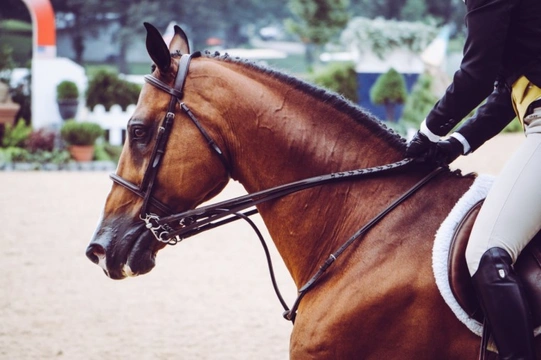
Want to try working hunter classes this year? Here is everything you need to know
Working hunter classes are great for lots of different riders, they are the ultimate performance class and are something that appeals to riders with sports horses, not just the showing fraternity. If you fancy trying out workers this year, here are the key things you will need to know.
Class types
At small shows, classes may be divided into pony workers and horse classes, there could even be a working cob class. At county level, the split tends to be between pony and horse with different worker classes for native ponies and show ponies. The horses are usually split between lightweight, heavyweight and novice or restricted. At county level, the classes can be qualifiers for Horse of the Year Show (HOYS) or the Royal International Horse Show (RIHS).
Format
Riders are required to jump a course of rustic fences. The performance is marked before the horse’s conformation and ride are assessed, marks for both sections are added together to produce the final result.
In some large classes, the judge will often only bring forward those horses who have jumped the course clear. The jumping section carries 60% of the 100 marks and the remaining 40 marks are split between style and presence and, ride and conformation. Check in the rules and the show schedule whether or not there is a ride judge who will also ride the horse.
Eligibility
In general terms, mares, geldings and stallions over the age of four are all eligible to compete but the specific society running the class may then have their own rules and some restrictions which would bar certain ponies and horses.
The NPS (National Pony Society) that runs native WHP classes, has classes based on breed heights. Under BSHA (British Show Horse Association) rules, restricted working hunters must not have qualified for RIHS or HOYS in that current year as a working hunter. Novice workers are not to have won a first prize over £35 or a total of £250. Always check with the rules of the governing body who are running the class and/or the organising show.
Grade A showjumpers and advanced event horses are not usually eligible to enter working hunter classes.
Tack and turnout
Turnout is fairly standard regardless of the size of the show holding the class. Hats need to be either a correctly secured skull cap or hat that meets current safety standards. A skull cap with a smart velvet or silk hat cover is perfectly acceptable.
Classic tweed jackets are correct attire regardless of the type of class and the size of the show; solid colour jackets in black or navy are not the correct dress but that tradition can vary for ponies. Usually, native ponies are shown with riders wearing tweed regardless of age but classes run under BSPS rules often favour riders in navy or black jackets.
Jodhpurs are normally canary or more commonly beige, never white, with long black leather boots or jodhpur boots for children on ponies. Either a stock or tie is acceptable usually matched with a pale coloured shirt perhaps blue or yellow.
Sometimes body protectors may be compulsory so check the rules carefully; they are a requirement in working hunter pony classes run by the British Show Pony Society.
Tack for the horse should be plain so no fancy browbands. A wide range of bits, nosebands and martingales are permitted but always double-check the rulebook before you go into the ring.
There can be no change of tack between the jumping phase and the rest of the assessment so the tack the horse jumps in must remain on it for the rest of the class. The only exception to this is protective jumping boots like brushing boots which can be worn for the jumping but must be removed for the ridden judging. There are quite specific rules about the types of brushing boots which may be worn and what type of closures they can have.
Sometimes it can be helpful to have a spare pair of stirrups in the ring for the ride judge if the regular jockey is very short or small.
Horses are usually shown with a plaited mane and tail the exception to this being cob workers and native working hunter pony classes.
Preparation
Some centres have full working hunter courses you can school over. In competition, the fences may often be dressed with a lot of greenery and pieces of brush which the horse will need to get used. Courses normally feature water trays and narrow styles.
Showing clinics can help riders prepare their horses with help from experienced judges and competitors. Going on foot and watching classes or grooming for a rider can be very informative.
Like all successful competitive outings with horses, the key lies in the preparation. Horses and ponies need to be familiar with jumping worker courses; just because they have show jumped doesn’t mean they will automatically jump rustic fences well – they can be very different.
If you are competing at a high level then the judge will need to ride your horse. Prepare for this by asking other riders to get on board so your horse is going happily and well for a number of different people.



